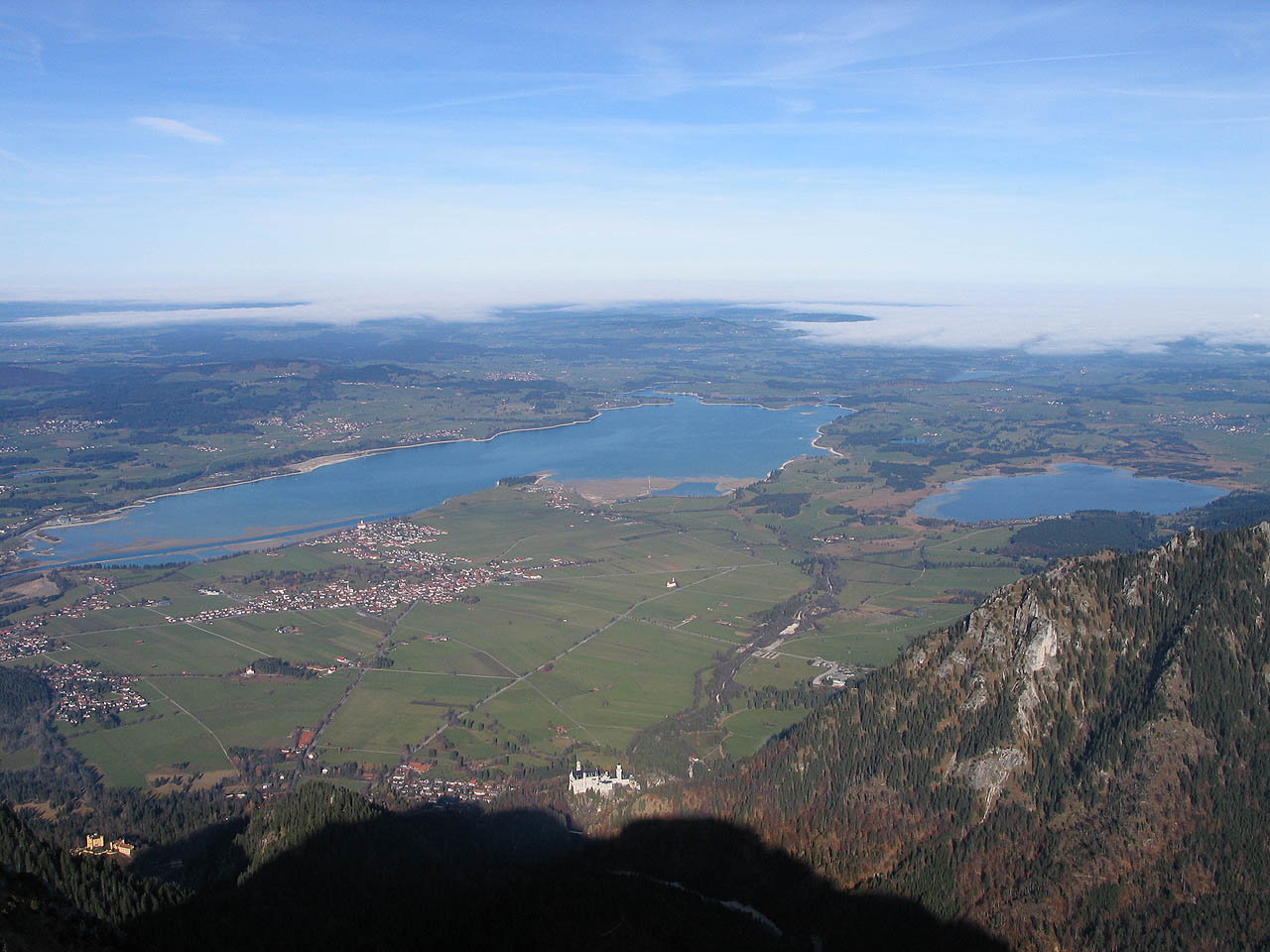|
Maximiliansweg
Maximiliansweg is a long-distance hiking path through the Bavarian Alps (with some short sections through the Austrian Alps), which connects Lindau (im Bodensee) to Berchtesgaden. The trail is about 350 km in distance and is largely congruous with long-distance path E4. Two boat crossings are suggested, from Lindau to Bregenz (over the Bodensee) and from Bad Wiessee to Tegernsee (over the Tegernsee). Beginning in Lindau, the path travels through Bregenz, Füssen passing such notable sites as Neuschwanstein castle. It continues through the Ammergauer Alps, Mangfall Mountains, Chiemgauer Alps and ends in Berchtesgaden Berchtesgaden () is a municipality in the district Berchtesgadener Land, Bavaria, in southeastern Germany, near the border with Austria, south of Salzburg and southeast of Munich. It lies in the Berchtesgaden Alps, south of Berchtesgaden; the ... south of Salzburg. External links * Brief information with map. * Hiking trails in Bavaria C ... [...More Info...] [...Related Items...] OR: [Wikipedia] [Google] [Baidu] |
Neuschwanstein Castle
Neuschwanstein Castle (german: Schloss Neuschwanstein, , Southern Bavarian: ''Schloss Neischwanstoa'') is a 19th-century historicist palace on a rugged hill above the village of Hohenschwangau near Füssen in southwest Bavaria, Germany. The palace was commissioned by King Ludwig II of Bavaria as a retreat and in honour of Richard Wagner. Ludwig chose to pay for the palace out of his personal fortune and by means of extensive borrowing, rather than Bavarian public funds. Construction began in 1869, but was never fully completed. The castle was intended as a private residence for the King, until he died in 1886. It was open to the public shortly after his death. Since then more than 61 million people have visited Neuschwanstein Castle. More than 1.3 million people visit annually, with as many as 6,000 per day in the summer. Location The municipality of Schwangau lies at an elevation of at the southwest border of the German state of Bavaria. Its surroundings are characteris ... [...More Info...] [...Related Items...] OR: [Wikipedia] [Google] [Baidu] |
Füssen
Füssen is a town in Bavaria, Germany, in the district of Ostallgäu, situated one kilometre from the Austrian border. The town is known for violin manufacturing and as the closest transportation hub for the Neuschwanstein and Hohenschwangau castles. As of , the town has a population of . History Füssen was settled in Roman times, on the Via Claudia Augusta, a road that leads southwards to northern Italy and northwards to Augusta Vindelicum (today's Augsburg), the former regional capital of the Roman province Raetia. The original name of Füssen was "Foetes", or "Foetibus" (inflected), which derives from Latin "Fauces", meaning "gorge", probably referring to the Lech gorge. In Late Antiquity Füssen was the home of a part of the Legio III Italica, which was stationed there to guard the important trade route over the Alps. Füssen later became the site of the "Hohes Schloss" (High Castle), the former summer residence of the prince-bishops of Augsburg. Below the Hohes Schloss is ... [...More Info...] [...Related Items...] OR: [Wikipedia] [Google] [Baidu] |
Chiemgau Alps
The Chiemgau Alps (german: Chiemgauer Alpen) are a mountain range in the Northern Limestone Alps and therefore belong to the Eastern Alps. Their major part is situated in Bavaria, Germany and only a small section crosses the Austrian border into the states of Salzburg and Tyrol (state), Tirol. They reach their highest elevation (1961 m) in the Sonntagshorn, a peak straddling the German-Austrian border. Geography The Chiemgau Alps stretch from the Inn River in the West to the Salzach River in the East and cover a distance of 60 km in strike direction; their maximum width in North-South direction amounts to about 25–30 km. They are surrounded by the following mountain ranges: * Bavarian Prealps in the West * Kaisergebirge in the Southwest * Leoganger Steinberge in the South * Loferer Steinberge in the Southeast * Berchtesgaden Alps in the Southeast and East Their northern edge often drops off quite drastically to the Alpine foothills, foothills. Major peaks * S ... [...More Info...] [...Related Items...] OR: [Wikipedia] [Google] [Baidu] |
Hiking Trails In Bavaria
Hiking is a long, vigorous walking, walk, usually on trails or footpaths in the countryside. Walking for pleasure developed in Europe during the eighteenth century.AMATO, JOSEPH A. "Mind over Foot: Romantic Walking and Rambling." In ''On Foot: A History of Walking'', 101-24. NYU Press, 2004. Accessed March 1, 2021. http://www.jstor.org/stable/j.ctt9qg056.7. Religious pilgrimages have existed much longer but they involve walking long distances for a spiritual purpose associated with specific religions. "Hiking" is the preferred term in Canada and the United States; the term "walking" is used in these regions for shorter, particularly urban walks. In the United Kingdom and the Republic of Ireland, the word "walking" describes all forms of walking, whether it is a walk in the park or backpacking (wilderness), backpacking in the Alps. The word hiking is also often used in the UK, along with rambling , hillwalking, and fell walking (a term mostly used for hillwalking in northern Eng ... [...More Info...] [...Related Items...] OR: [Wikipedia] [Google] [Baidu] |


